Museums
Museo Civico e Diocesano Riuniti
MONTALCINO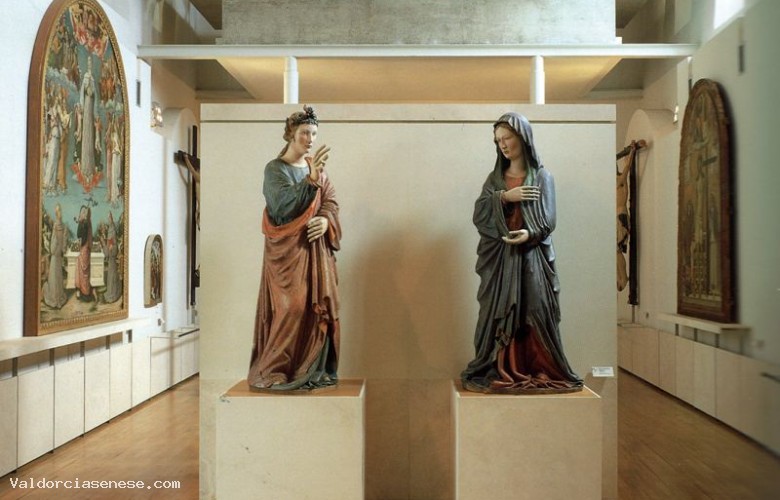
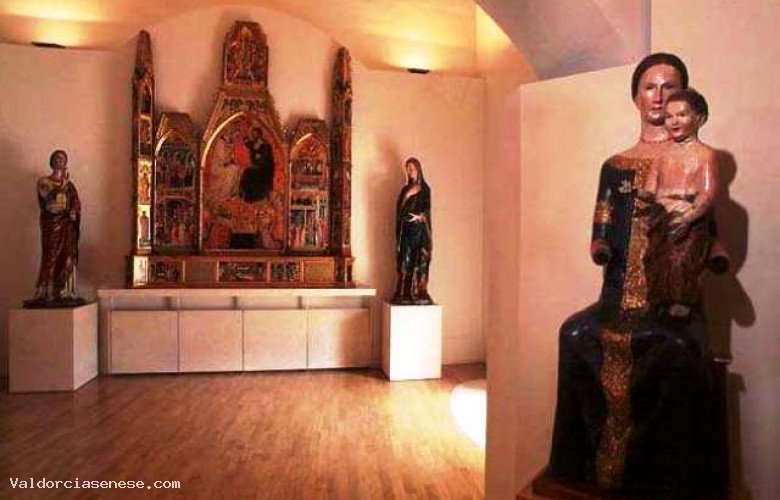
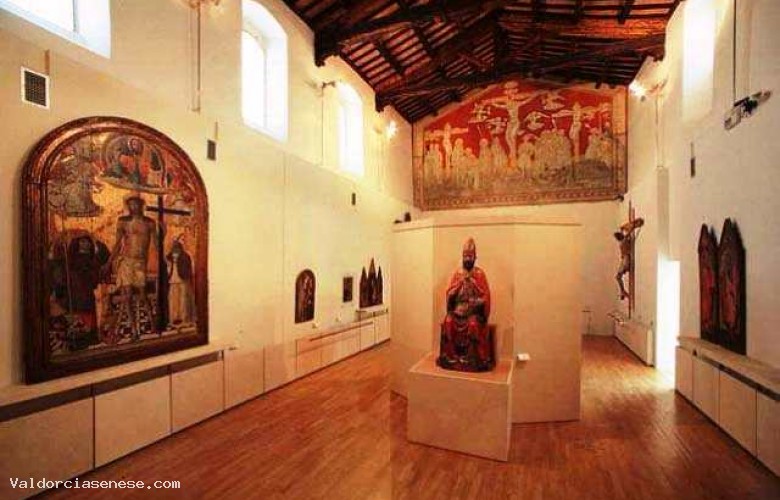
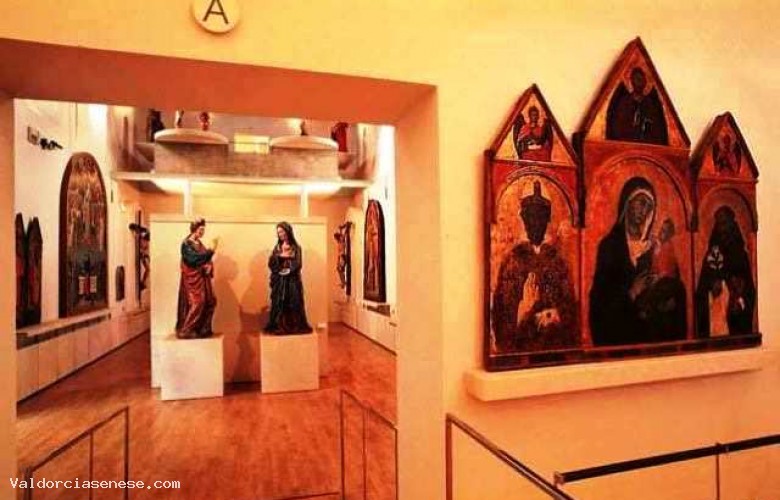
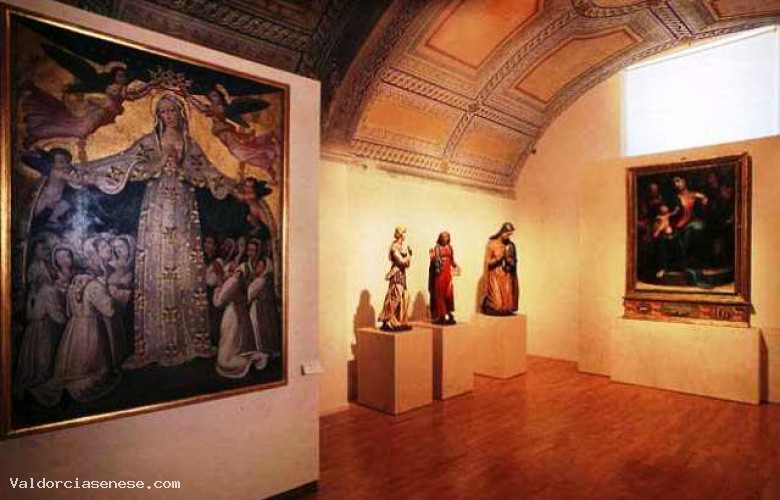
Time table
TIMETABLE: from Saturday to Monday from 10.30 to 18.30.TICKETS: Free promo.
Within the ancient rooms of S. Agostino monastery in Montalcino, is situated the Museum of Montalcino, one of the most important collections of archeological, medieval and modern art in the district of Siena. The collection offers an almost complete view of this important Tuscan town’s artistic production. A triptych and a polyptych testify the big influence of Duccio di Buoninsegna’s work.
The generation that overcome the Black Death crises in 1348, is represented by the works of Luca Tommè (Madonna col Bambino), the so-called Master of Panzano (“Madonna col Bambino” and “ The Saints”) and, above all, Bartolo di Fredi, who carried out an intense activity for the many Church in Montalcino.
His most important pieceof work is the eclectic and impressive polyptych dedicated to Our Lady’s Incoronation and Life, dated 1388 and reassembled here for the first time, gathering panels from the Museum of Montalcino and the Academy of Fine Arts in Siena.
The late Gothic period is repressed here by a fine “Madonna dell’Unità” by Sano di Pietro, author of an effigy of S. Bernardino also contained in this collection. As for the Sixteenth century, a “Madonna della Misericordia” by Vincenzo Tamagni from S.Gimignano, reveals some trace of Raffaello’s style. A teste of Beccafumi’s peculiarity and gracefulness is traceable in the “Madonna con Bambino e Santi” panel-painting by Marco Pino, his most talented pupil.
The valuable group of painted wooden sculptures holds a particular importance for the Museum of Montalcino. Giovanni Pisano’s strong and expressive feature are fully reflected in a “Madonna col Bambino”. A small crucifix of light and elegant forms, is presumed to be a work of Giovanni d’Agostino , a most important sculptor and architect of the New Cathedral of Siena, who, in his carvings, translated Simone Martini’s sophisticated figurations. Two groups of the Annunciation and several crucifixes, give testimony of the vary high standard of the Senese wood-carving masters who lived in the second half of Fourteenth Century. The magnificent era of late Gothic sculpture is represented by work of the Senese sculpture irepresented by the work of the senese sculptor Giovanni di Torino , who proved himself to be a careful disciple of Lorenzo Ghiberti’s style and with two figures carved by Francesco di Valdambrino : an impressive “ St.Peter” donated to Montalcino by Pio III and a fine crucifix displaying the very apex of this refined and delicate Senese sculptor , a friend and collaborator of Jacopo della Quercia’s.
Within the ancient rooms of S. Agostino monastery in Montalcino, is situated the Museum of Montalcino, one of the most important collections of archeological, medieval and modern art in the district of Siena. The collection offers an almost complete view of this important Tuscan town’s artistic production. A triptych and a polyptych testify the big influence of Duccio di Buoninsegna’s work.
The generation that overcome the Black Death crises in 1348, is represented by the works of Luca Tommè (Madonna col Bambino), the so-called Master of Panzano (“Madonna col Bambino” and “ The Saints”) and, above all, Bartolo di Fredi, who carried out an intense activity for the many Church in Montalcino.
His most important pieceof work is the eclectic and impressive polyptych dedicated to Our Lady’s Incoronation and Life, dated 1388 and reassembled here for the first time, gathering panels from the Museum of Montalcino and the Academy of Fine Arts in Siena.
The late Gothic period is repressed here by a fine “Madonna dell’Unità” by Sano di Pietro, author of an effigy of S. Bernardino also contained in this collection. As for the Sixteenth century, a “Madonna della Misericordia” by Vincenzo Tamagni from S.Gimignano, reveals some trace of Raffaello’s style. A teste of Beccafumi’s peculiarity and gracefulness is traceable in the “Madonna con Bambino e Santi” panel-painting by Marco Pino, his most talented pupil.
The valuable group of painted wooden sculptures holds a particular importance for the Museum of Montalcino. Giovanni Pisano’s strong and expressive feature are fully reflected in a “Madonna col Bambino”. A small crucifix of light and elegant forms, is presumed to be a work of Giovanni d’Agostino , a most important sculptor and architect of the New Cathedral of Siena, who, in his carvings, translated Simone Martini’s sophisticated figurations. Two groups of the Annunciation and several crucifixes, give testimony of the vary high standard of the Senese wood-carving masters who lived in the second half of Fourteenth Century. The magnificent era of late Gothic sculpture is represented by work of the Senese sculpture irepresented by the work of the senese sculptor Giovanni di Torino , who proved himself to be a careful disciple of Lorenzo Ghiberti’s style and with two figures carved by Francesco di Valdambrino : an impressive “ St.Peter” donated to Montalcino by Pio III and a fine crucifix displaying the very apex of this refined and delicate Senese sculptor , a friend and collaborator of Jacopo della Quercia’s.